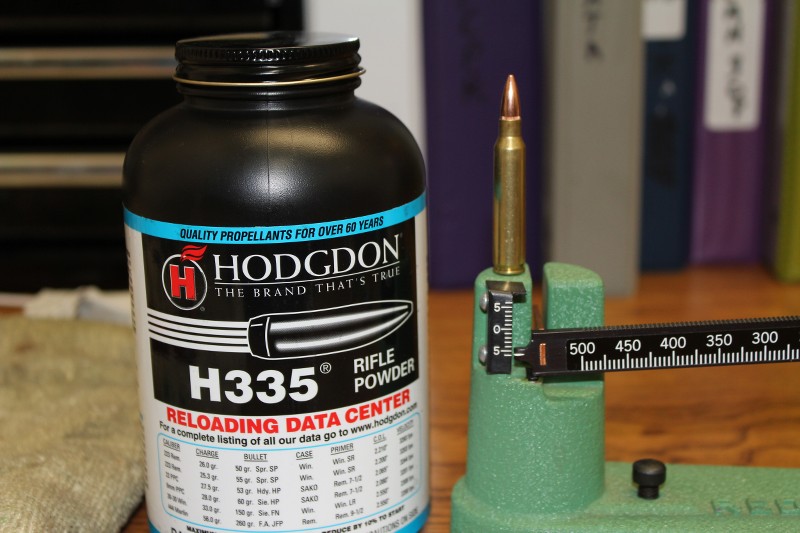I had a few hundred 55gr FMJ bullets from Everglades Ammo kicking around that I wanted to load up for general plinking. I had previously loaded these over some H322, but have since been using H335 for my 55gr bullets with good accuracy. Knowing these cheapo bullets would never be very accurate, I decided to use the same accuracy load of (24.9gr H335) that I use with 55gr Hornady VMAX boat tails without doing a standard load workup. With 24.9gr being on the low side of my original min/max (24.7-25.9 gr), I did not anticipate encountering any high pressure signs.
So today at the range I was using these rounds as plinkers for initial shots before fine zeroing a new scope n rings. I fired a couple with no issues and then fired one and had the primer back out upon firing. Had three more primers back out in the next 7 rounds. Looking at those that did not back out, I did not see any signs of excessive pressure. A little flattened but nothing alarming. I went ahead and finished up zeroing using my VMAX loads without incident or pressure signs.
So now I'm scratching my head. Both the 55gr VMAX and 55gr FMJs were loaded the same day, in twice fired LC brass, and CCI #41 primers. Besides a very slight difference in bullet profile, the only difference is I crimped the FMJs and not the VMAXs.
I can only guess that having the LEE Factory crimp on the FMJs, changed the combustion and bullet travel down the barrel enough to get a secondary detonation or something........................???
Weapon: AR15, 5.56, 24" HBAR, 1:8 twist.
(FYI, I also had a 16" AR on hand and tried the 55gr FMJs in it and had 1 of 3 rounds back out a primer as well.)
So today at the range I was using these rounds as plinkers for initial shots before fine zeroing a new scope n rings. I fired a couple with no issues and then fired one and had the primer back out upon firing. Had three more primers back out in the next 7 rounds. Looking at those that did not back out, I did not see any signs of excessive pressure. A little flattened but nothing alarming. I went ahead and finished up zeroing using my VMAX loads without incident or pressure signs.
So now I'm scratching my head. Both the 55gr VMAX and 55gr FMJs were loaded the same day, in twice fired LC brass, and CCI #41 primers. Besides a very slight difference in bullet profile, the only difference is I crimped the FMJs and not the VMAXs.
I can only guess that having the LEE Factory crimp on the FMJs, changed the combustion and bullet travel down the barrel enough to get a secondary detonation or something........................???
Weapon: AR15, 5.56, 24" HBAR, 1:8 twist.
(FYI, I also had a 16" AR on hand and tried the 55gr FMJs in it and had 1 of 3 rounds back out a primer as well.)


